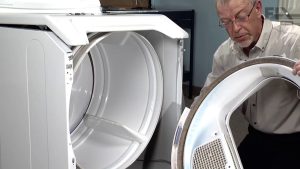Introduction Window AC Repair
Window AC Repair When the scorching summer heat is at its peak, a functioning window air conditioner becomes a lifeline for many households. It’s the trusty appliance that keeps your indoor environment comfortable and cool. However, like all machines, window air conditioners can encounter issues and breakdowns, leaving you in a sweat. In this comprehensive guide, we’ll delve into the world of window AC repair, helping you troubleshoot common problems, perform maintenance, and even extend the lifespan of your cooling unit. Window AC Repair
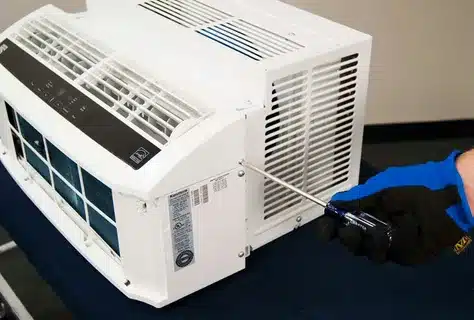
Table of Contents
I. Understanding Window AC Units
cssCopy code
A. What Is a Window Air Conditioner? B. How Does It Work?
II. Common Window AC Problems
cssCopy code
A. No Cooling Effect B. Poor Airflow C. Strange Noises D. Water Leaks
III. DIY Window AC Troubleshooting
cssCopy code
A. Cleaning the Air Filter B. Inspecting the Thermostat C. Clearing Debris from the Condenser Coils D. Checking the Electrical Connections
IV. Maintenance Tips for Window ACs
cssCopy code
A. Regular Cleaning B. Seasonal Checkups C. Changing the Air Filter D. Cleaning the Condensate Drain
V. Extending the Lifespan of Your Window AC
mathematicaCopy code
A. Proper Installation B. Using a Surge Protector C. Professional Servicing D. Storing Your Unit in the Off-Season
VI. When to Call a Professional
cssCopy code
A. Refrigerant Leaks B. Electrical Issues C. Compressor Problems D. Strange Smells
VII. Energy-Efficient Operation
mathematicaCopy code
A. Setting the Right Temperature B. Using a Programmable Thermostat C. Proper Insulation D. Closing Curtains and Blinds
VIII. Conclusion
I. Understanding Window AC Units
A. What Is a Window Air Conditioner?
Window AC Repair A window air conditioner, commonly known as a window AC, is a compact cooling unit designed to fit into a window or a specially made opening in a wall. It functions by drawing in warm indoor air, cooling it, and then expelling it back into the room as cool air. Window AC units are popular for their affordability and ease of installation.
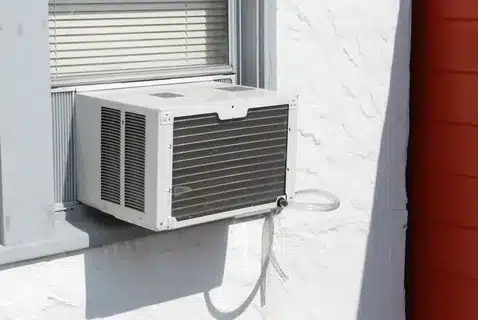
B. How Does It Work?
Window AC Repair .Window ACs operate on a simple principle: they use a refrigeration cycle to remove heat from indoor air. Inside the unit, a refrigerant liquid is pumped through a series of coils. As the warm air from your room is blown over these coils, the heat is absorbed by the refrigerant, turning it into a gas. The now-cooled air is then blown back into the room, while the gaseous refrigerant is compressed back into a liquid outside the unit, releasing the absorbed heat. This cycle continues until the desired indoor temperature is achieved.
II. Common Window AC Problems
A. No Cooling Effect
Window AC Repair One of the most frustrating issues with a window AC is when it fails to cool the room effectively. This problem can arise due to various factors, such as a dirty air filter, refrigerant leaks, or a malfunctioning compressor.
B. Poor Airflow
If your window AC is not blowing air with enough force, it can lead to inadequate cooling. This can be caused by a clogged air filter, obstructed vents, or a faulty fan motor.
C. Strange Noises
Unusual sounds coming from your window AC, such as buzzing, rattling, or squealing, can be indicative of underlying problems. These noises may stem from issues with the fan blades, the compressor, or loose components.
D. Water Leaks
Finding water pooling around your window AC is a common issue. It can occur due to a clogged condensate drain, a damaged seal, or improper installation.
III. DIY Window AC Troubleshooting
A. Cleaning the Air Filter
One of the simplest ways to improve your window AC’s performance is by regularly cleaning or replacing the air filter. A clogged filter restricts airflow and reduces cooling efficiency.
B. Inspecting the Thermostat
Ensure that the thermostat is set to the desired temperature and is functioning correctly. If it’s not, consider recalibrating it or replacing it if necessary.
C. Clearing Debris from the Condenser Coils
Over time, dust and debris can accumulate on the condenser coils, hindering heat exchange. Gently clean the coils using a soft brush or vacuum cleaner.
D. Checking the Electrical Connections
Window AC Repair Inspect the unit’s electrical connections, including the power cord and plug. Loose or damaged connections can lead to electrical problems and reduced cooling capacity.
Stay tuned for the continuation of this guide, where we will explore maintenance tips, ways to extend your window AC’s lifespan, and when it’s time to call a professional for repairs. Your cool and comfortable summer is just a few steps away!
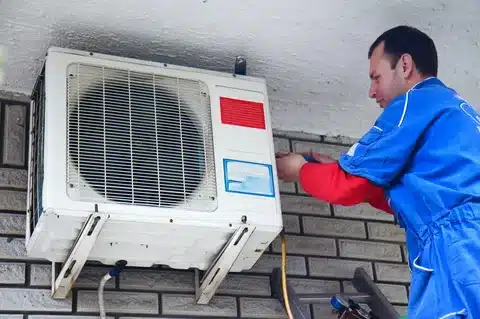
IV. Maintenance Tips for Window ACs
A. Regular Cleaning
To maintain optimal performance, clean the unit’s exterior and interior regularly. Dust and dirt can accumulate on the fins and coils, reducing cooling efficiency.
B. Seasonal Checkups
Before the summer season begins, schedule a thorough inspection of your window AC by a professional technician. They can identify and address potential issues before they escalate.
C. Changing the Air Filter
Replace or clean the air filter every few months, depending on usage. A clean filter ensures proper airflow and efficient cooling.
D. Cleaning the Condensate Drain
Ensure that the condensate drain is clear of obstructions. A clogged drain can lead to water leaks and potential damage to your unit.
Stay tuned for the continuation of this guide, where we will explore ways to extend the lifespan of your window AC unit and when it’s best to seek professional help for repairs. Window AC Repair
V. Extending the Lifespan of Your Window AC
A. Proper Installation
Correct installation is key to a window AC’s longevity. Ensure it’s securely mounted and sealed to prevent air leaks.
B. Using a Surge Protector
Protect your window AC from voltage spikes and power surges by using a surge protector. Sudden power fluctuations can damage the unit’s components.
C. Professional Servicing
Consider annual professional servicing to keep your window AC in top condition. Technicians can detect and fix minor issues before they become major problems.
D. Storing Your Unit in the Off-Season
Window AC Repair If you live in an area with distinct seasons, store your window AC properly during the off-season. Clean it, cover it, and store it in a dry, cool place to prevent damage.
Stay tuned for more tips on energy-efficient operation, knowing when to call a professional, and a conclusion to our guide on window AC repair.
VI. When to Call a Professional
A. Refrigerant Leaks
If you suspect a refrigerant leak, it’s essential to call a professional technician immediately. Handling refrigerant without the proper equipment can be hazardous. Window AC Repair
B. Electrical Issues
Electrical problems like faulty wiring or a malfunctioning compressor should only be addressed by a qualified technician Window AC Repair
Understanding Your Window AC Unit
H1: The Inner Workings of Your AC
When it comes to window AC repair, it’s essential to first understand how these units function. A basic understanding of the components, such as the compressor, condenser, and evaporator, will help you diagnose problems more effectively.
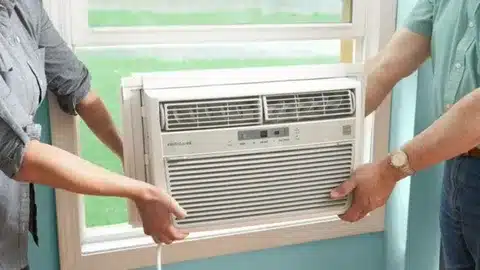
H2: Common Issues
Before diving into the repair process, let’s identify the typical problems you might encounter with your window AC:
- H3: Poor Cooling Efficiency: Your AC isn’t cooling your room effectively.
- H3: Strange Noises: Unusual sounds coming from the unit.
- H3: Water Leakage: Water dripping or pooling around the AC.
- H3: Electrical Problems: Issues with power supply or circuitry.
- H3: Fan Malfunctions: Problems with the fan’s operation.
- H3: Thermostat Troubles: Temperature control issues.
Troubleshooting and Repair
H1: DIY Troubleshooting
Before calling a professional, you can attempt some DIY troubleshooting steps:
H2: Cleaning the Filters
One of the most common reasons for poor cooling is dirty filters. Remove and clean them regularly to maintain optimal performance.
H2: Clearing Blockages
Check the AC unit for any obstructions in the airflow path. Remove debris that might hinder the cooling process.
H2: Thermostat Adjustment
Ensure the thermostat settings are accurate. An incorrect temperature setting can lead to discomfort and inefficiency.
H1: Professional Repairs
H2: Refrigerant Leak Detection
If your AC isn’t cooling properly, a refrigerant leak could be the culprit. Professionals can detect and repair leaks safely.
H2: Electrical Checks
Electrical issues can be hazardous. Call an expert to inspect and repair any problems with the unit’s wiring or electrical components.
H2: Fan and Compressor Examination
Professionals can diagnose and replace faulty fans or compressors to restore your AC’s cooling capacity.

